Mysterious wall paintings
3 November 2016
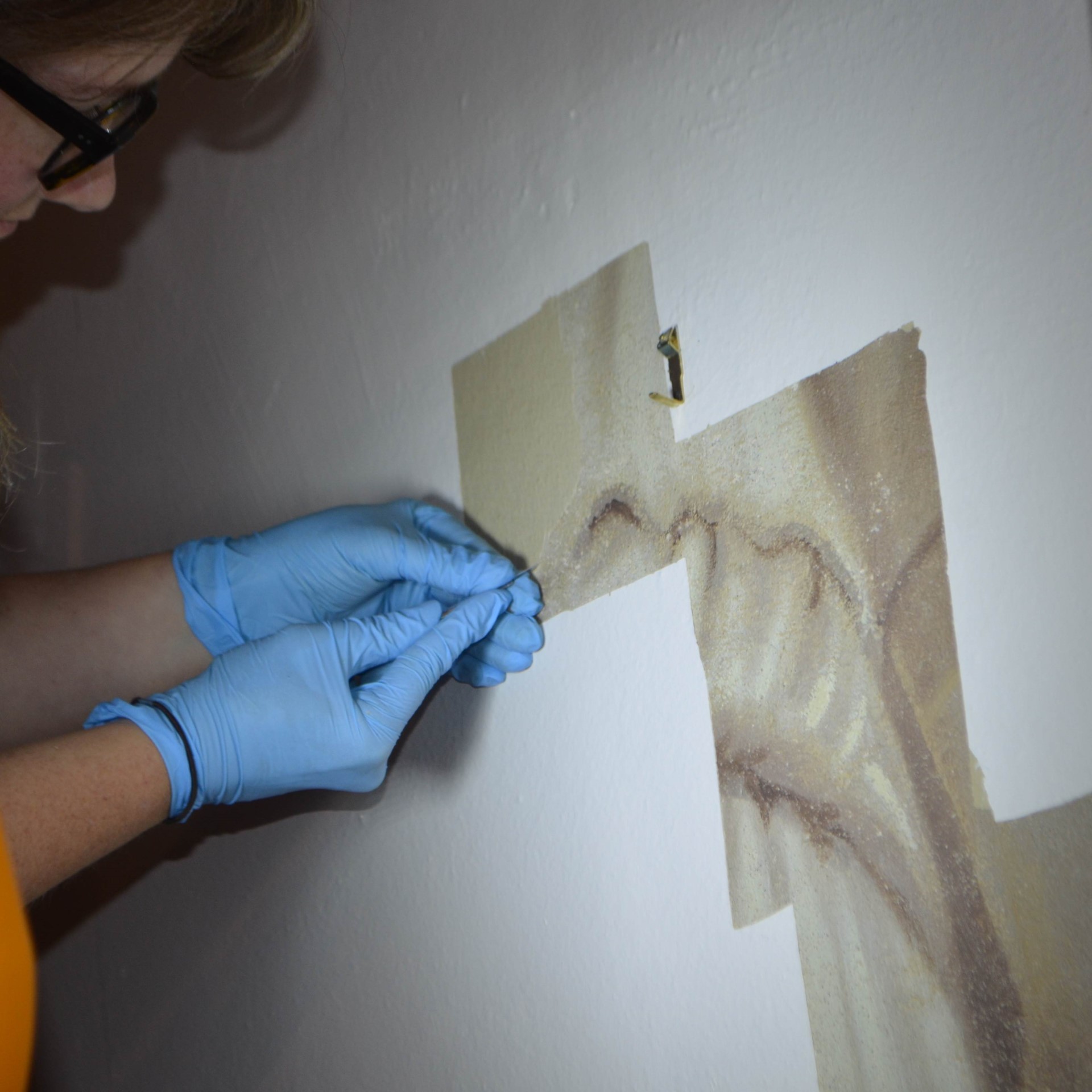
After the successful completion of our Fame and Victory conservation project we have moved on to investigating strange impressions on the walls of the Grand Staircase.
During conservation a member of the team found this reoccurring floral pattern on the wall directly below the painting. From the scaffold they gazed down, the raking light revealing impressions across the walls hinting at something hidden beneath the modern paintwork. Painted stone blocks, roundels and floral patterns. A tantalising peek into the past…
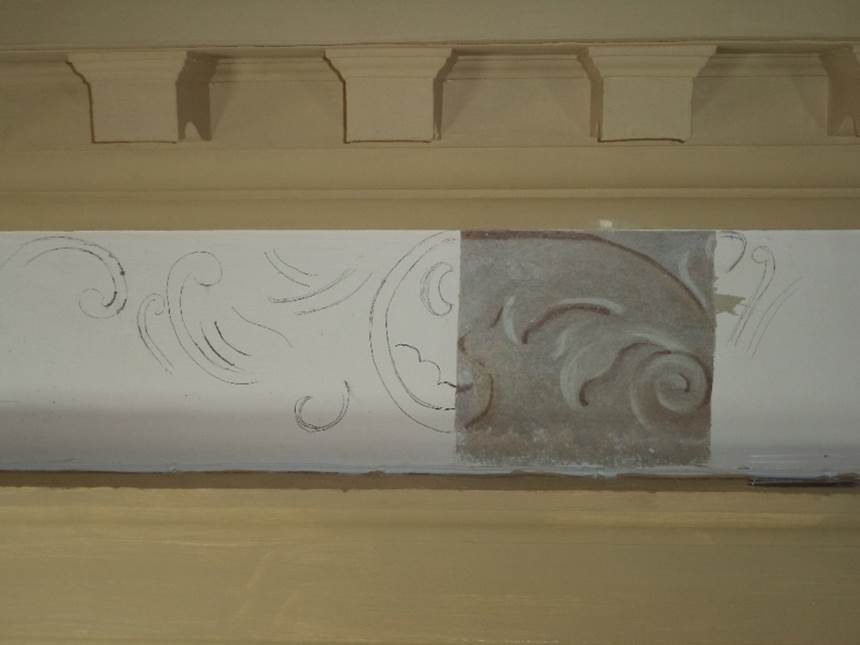
Floral patterned boarder revealed directly below the ceiling painting
In the 1740s Viscount Cobham commissioned Francesco Sleter (1685-1775) to create grand iconographic themes of victorious warfare and civil justice throughout his house. Fame and Victory was part of this scheme. At the top of the stairs, on the landing adjacent to Fame and Victory, is a trompe l’oeil ceiling which survives in part, the central composition missing and unrecorded; four viscount coronets and entwined ‘C’s ornament each corner.
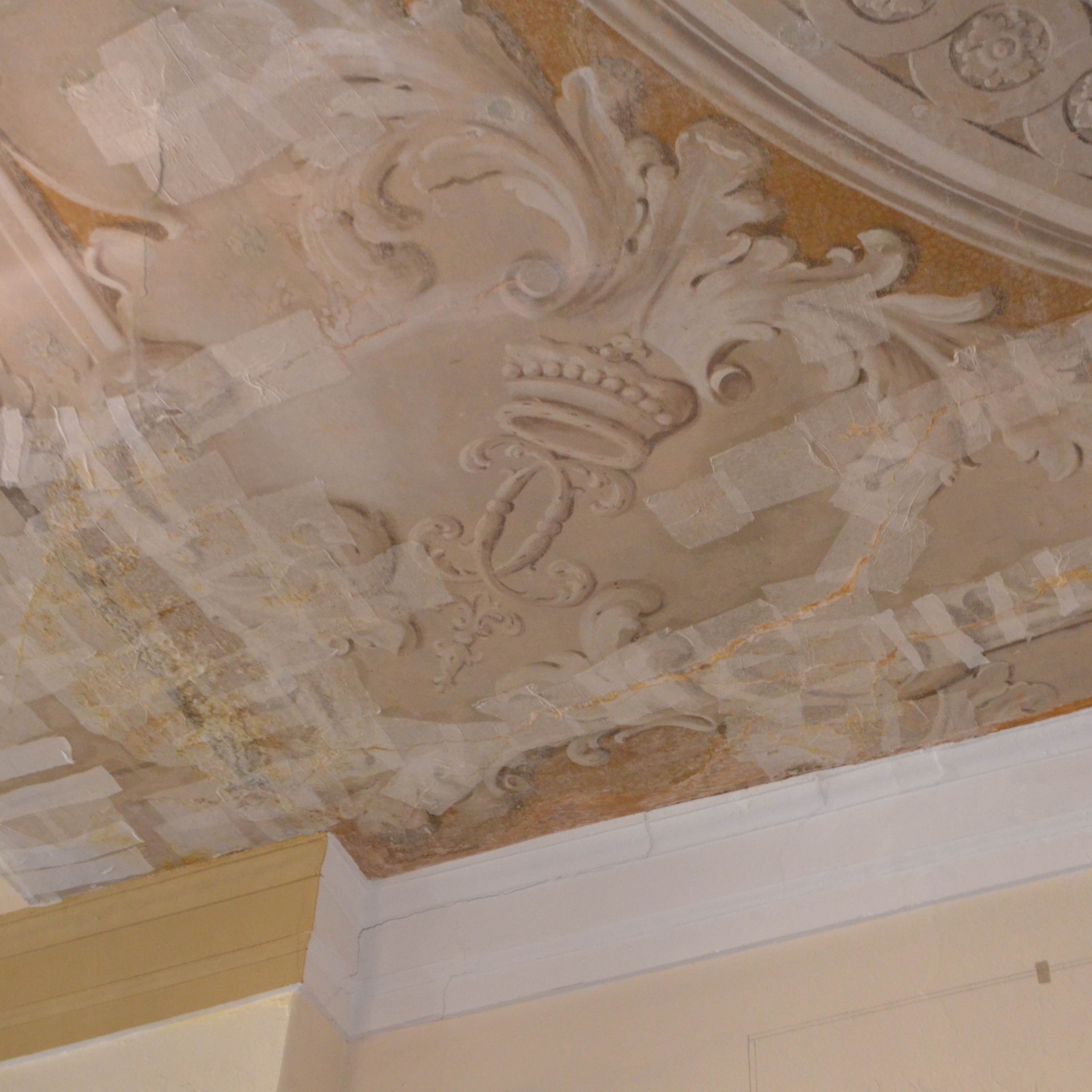
Consolidation work has taken place to preserve the ceiling for further restoration. Evidence of the intertwined 'C's.
The ‘C’s allude to Cobham. We know that this area was at one time highly decorated and so wall paintings would not be out of place here however this area of the building had always perplexed us. In the early 18th century the first guidebook was produced at Stowe by Benton Seeley. From the middle of the century the guidebook started to include information about rooms in the House. So what did the guidebook have to say about this area?
.jpg)
Seeley Guide frontispiece
In 1759 the account reads:
Ornamented with iron work. Three ceiling pieces painted by Slater. Justice and Peace, Fame and Victory, Plenty and Constancy. The walls are adorned with warlike pieces.
There is no remaining evidence of Justice and Peace or Plenty and Constancy and we never knew if these ‘warlike pieces’ were ever painted on to the walls, and if they were we did not know if anything would be left of them under the subsequent layers of paint. But now there was hope - something might be waiting to be discovered.
So why were they covered up? We believe that Earl Temple (Viscount Cobham’s successor at Stowe) asked his designer Robert Jones to cover the paintings when the lavish baroque designs became out of date and old fashioned. Earl Temple was a keen collector and he was amassing many fine paintings and needed wall space to hang them. It would not have been possible to hang his paintings in front of the designs and so the painted walls were likely covered up.
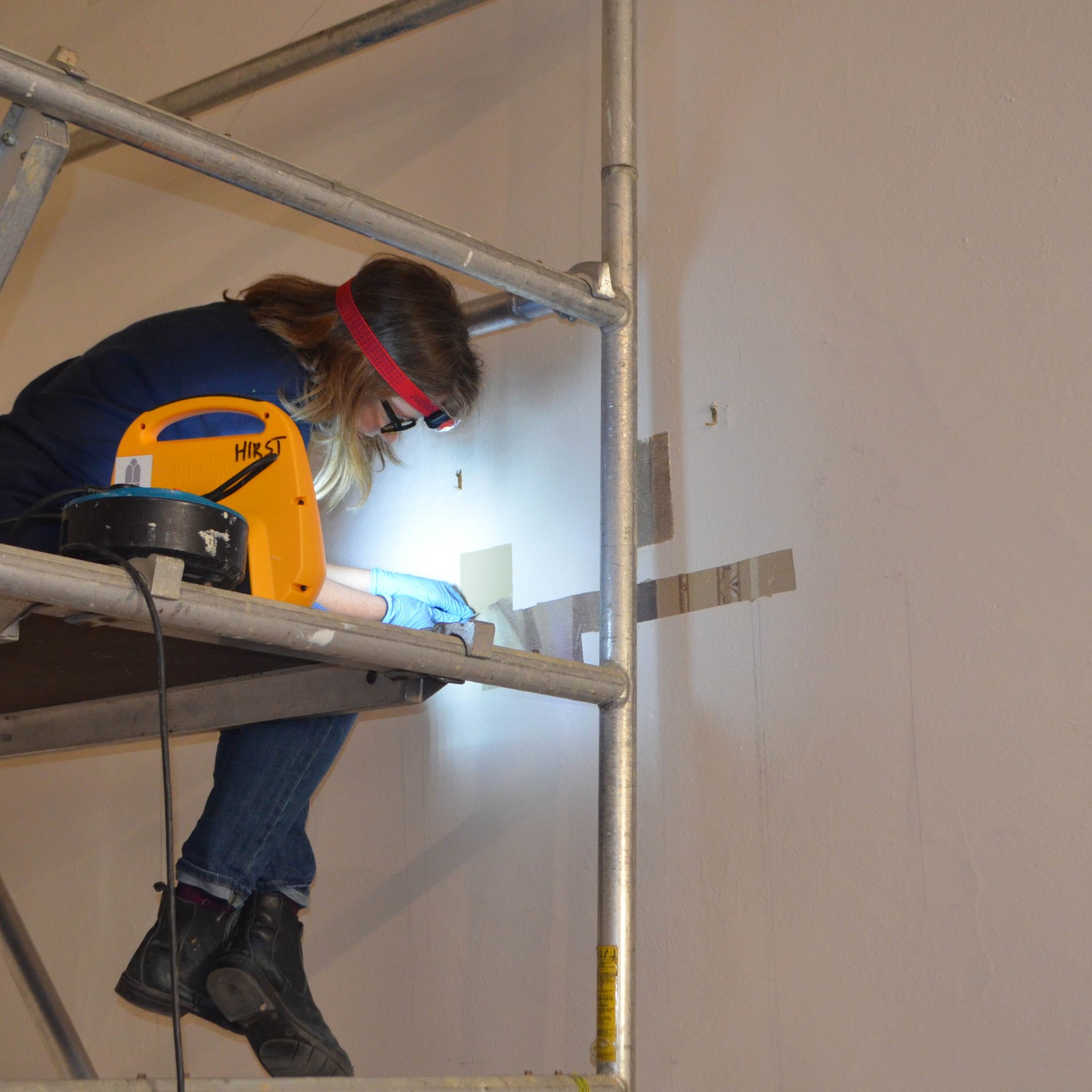
Conservator at work on the landing of the Grand Staircase
On Monday the conservation team returned to Stowe. Commissioned to sketch out the designs they saw in the raking light and, more significantly, to open up windows into the paint layers to see if there was anything of the original scheme remaining underneath.
The team here at Stowe are getting very excited. On the first day our conservators had discovered this tantalising paintwork. Hidden for more than 200 years we are the first people to see these designs since Earl Temple covered them up.
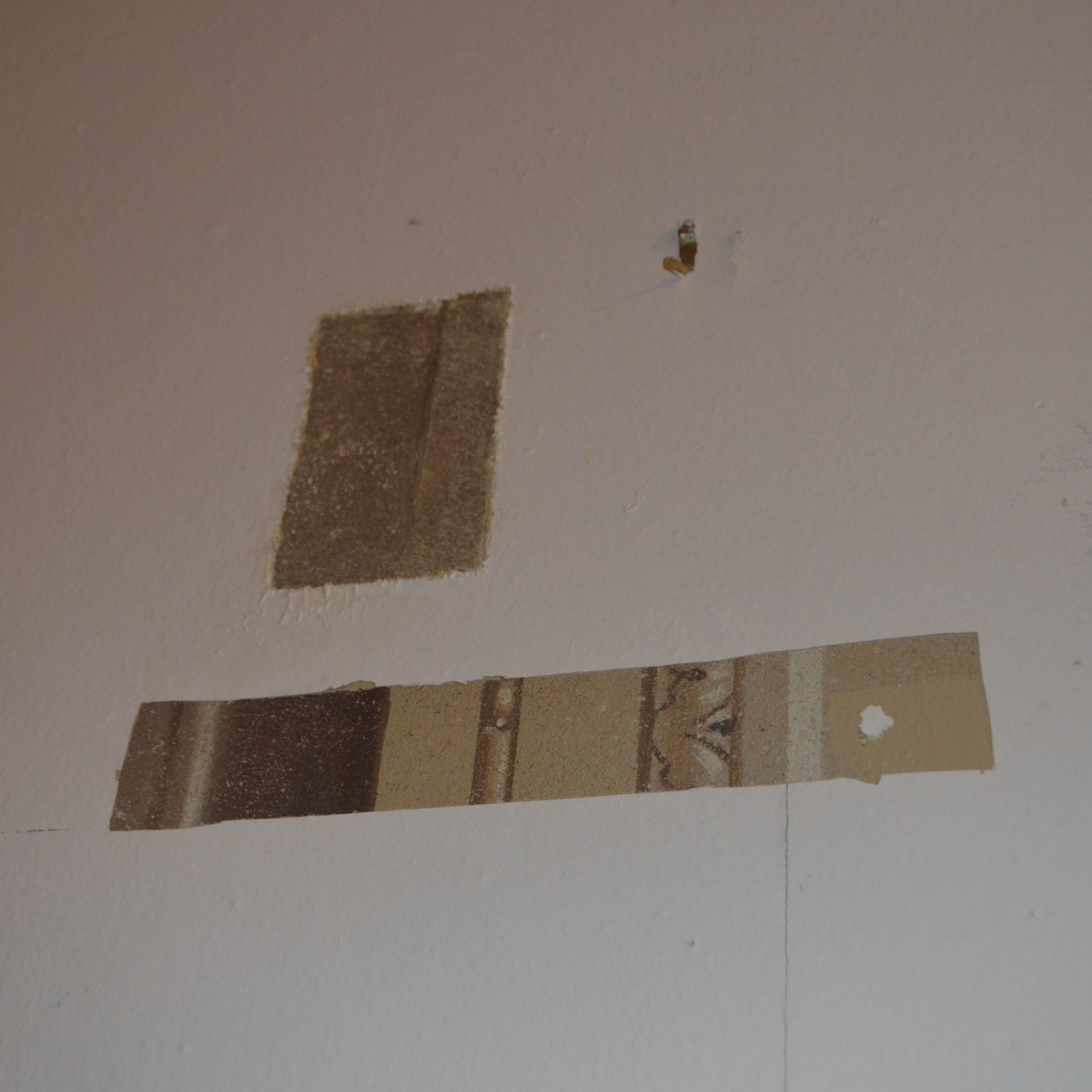
Delicate painted beading and molding revealed underneath the layers of paint.
Little windows into the work suggest good survival – more is being uncovered and we cannot wait to find out more. Follow us on social media to keep up to date with our discoveries. Use the hashtag #StoweDiscovery to find out more. Discover what happen next in our news article.
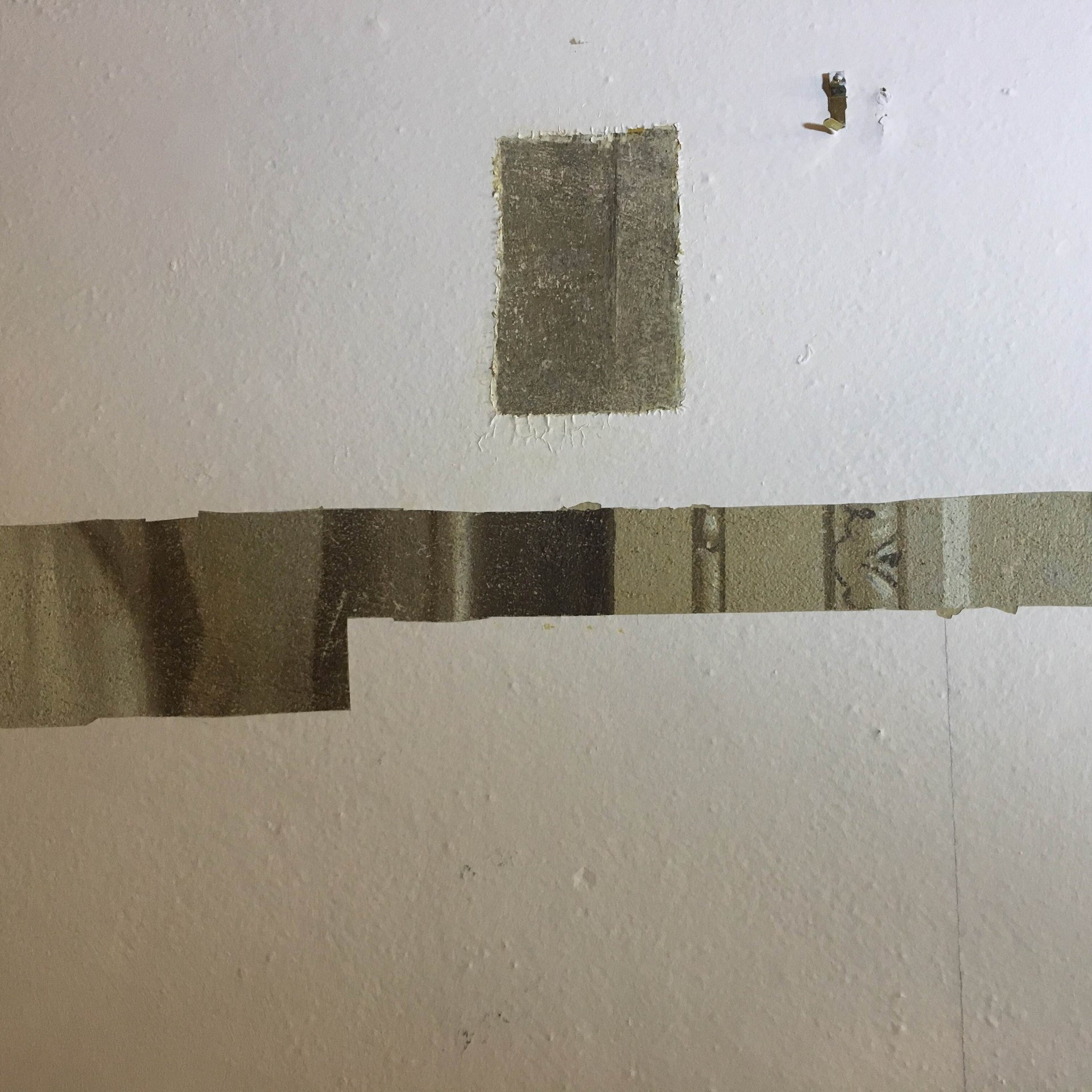
Evidence of a painted niche - we can't wait to find out more